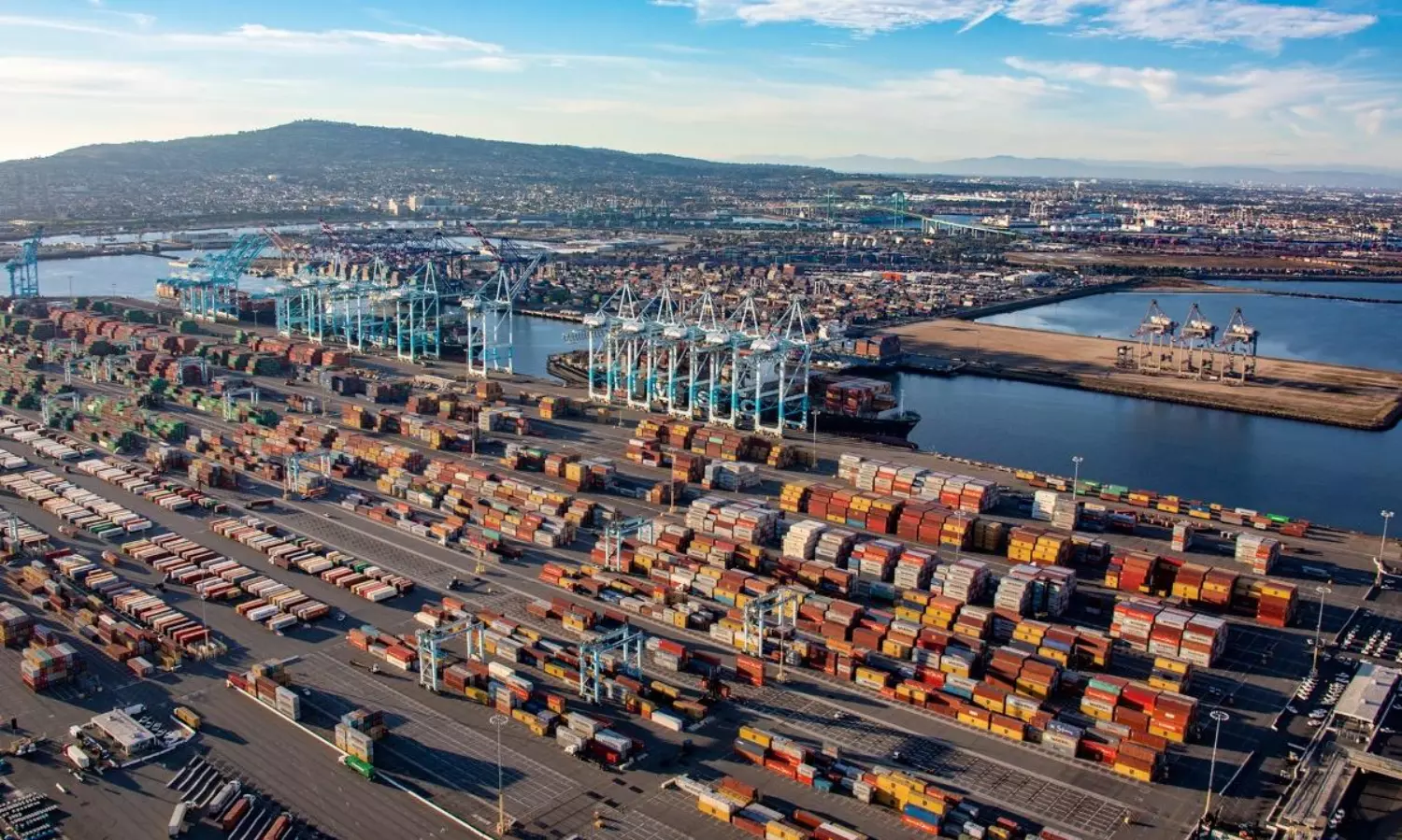White House initiates FLOW for supply chain data sharing
Plan includes 18 participants across the supply chain including trucking, warehousing, logistics companies and ports.

The Biden administration in the U.S. is getting into the supply chain act again with a new plan - Freight Logistics Optimization Works (FLOW), "an information sharing initiative to pilot key freight information exchange between parts of the supply chain.
"The commitment to moving the transportation logistics system to 21st century digitisation follows the commitment to move toward 24/7 operations many made last fall," reads a fact sheet issued by the White House.
The plan includes 18 initial participants across the supply chain including trucking, warehousing, logistics companies and ports - "with the hope and expectation to include more partners going forward."
Some partners include the Ports of Los Angeles & Long Beach, FedEx, CH Robinson, Mediterranean Shipping Company (MSC), Prologis and Digital Container Shipping Association (DCSA).
Director of National Economic Council Brian Deese and Secretary of Transportation Pete Buttigieg recently met key stakeholders in the supply chain to help to speed up the movement of goods, reducing delays and costs for American consumers.
"Participants discussed the success of pop-up sites at restoring fluidity over the past year and how they will be needed in the future," the White House statement added.
Participants eager to help resolve the crisis but is there a plan?
"We look forward to helping drive this important initiative forward," says Gene Seroka, Executive Director, Port of Los Angeles. "This nationwide supply chain data visibility effort will support system resiliency, improve our trade competitiveness and empower American businesses to get products to market with greater consistency and reduced cost."
Udo Lange, President and CEO of Fedex Logistics, added: "Data is critical to all participants in the supply chain, and in the ocean environment, there is tremendous opportunity to achieve better optimisation of current data by making more effective use of it from origin to delivery point. FedEx supports the administration's efforts to bring stakeholders together to begin the conversation in FLOW."
"Considering that the flow of goods through Prologis buildings represents 2.5 percent of global GDP, we play a unique role in the global supply chain," says Gary Anderson, Chief Operating Officer, Prologis. "We are pleased to be part of this effort to use data to improve the systems that support the movement of goods in this nation. We're hopeful this public-private effort will help create a stronger, more resilient supply chain."
Thomas Bagge, CEO, DCSA, said: "There are currently limited pathways for digitalised data to travel freely across the end-to-end-supply chain. As a result, blind spots exist along the shipment journey, making supply chains less predictable, and hence, less reliable. Having an interoperable digital infrastructure will help eliminate blind spots by increasing the availability and reliability of data. DCSA and its members are committed to contributing to the Department of Transportation initiative to create a standards-based, interoperable digital infrastructure."
No relief likely soon
Is all the goodwill and talk leading to concrete steps? Unlikely because various reports have already warned of fresh pain and increasing backlogs at the U.S. West Coast, and China lockdowns leading to further deterioration of supply chains.
"Although the situation has improved across the US West Coast ports, we have seen a steep increase in vessel waiting time at US East Coast ports, and with a spate of new outbreaks in China then we are expecting to see disruption increasing again," Martin Dixon, Head of Research Products and Elenor Hadland, Senior Analyst, Ports & Terminal, Drewry said recently in a webinar on the container ports and terminals market.
"Overall, it must be recognised that it takes time to expand capacity across all legs of the supply chain – the lead-time for vessels, ports, rail links and warehouses is all one year plus. In the meantime, the lack of carrier schedule of integrity, together with port call omissions and blank sailings is resulting in most terminals handling fewer calls each week but undertaking higher than usual volume exchanges. This creates high peaking factors which result in a reduction in terminal productivity with knock-on effects along the supply chain – be it vessel queueing, feeder and barge delays or cargo rollovers. There is no quick supply-side fix, but the risk of a demand-side fix has significantly increased with Russia's invasion of Ukraine."
Outlining the challenges for US West Coast congestion, Drewry said:
* Expanding the capacity of the inland supply chain: the major constraint has been the inability of the inland transport network to absorb additional demand; shortage of trucks, rail cars and congestion at receiving warehouses. The U.S.chassis system is also a constraint on productivity.
* Labour: shortage of warehousing personnel and heavy goods vehicle drivers. Port workforce remains adequate although intermittent issues due to Covid-led absenteeism have contributed to congestion.
* Infrastructure: there is scope to operate most USWC terminals far more intensively. Introduction of automated yard systems would enable U.S. terminals to perform at a level similar to that seen in major European ports, and off-dock empty yards would ease pressure at the terminals.
Los Angeles port handles record volumes in Feb
The Port of Los Angeles processed 857,764 TEUs in February, a 7.3 percent increase compared to last year.
"It was the Port's busiest February in its 115-year history, and represents back-to-back record months to begin 2022," according to an official statement.
"We're taking advantage of the temporary lull in ship arrivals due to the Lunar New Year production slowdown in Asia to prepare for another wave of imports," Seroka added. "We expect an increase in vessel arrivals soon as retailers begin to replenish their low inventories."
Loaded imports were 424,073 TEUs in February compared to the previous year, an increase of 2.7 percent. Loaded exports came in at 95,441 TEUs, a 5.7 percent decrease compared to the same period last year. Exports have now declined 36 of the last 40 months in Los Angeles.
"Empty containers climbed to 338,251 TEUs, a jump of 18.6 percent compared to last year due to continued heavy demand in Asia."
Two months into 2022, overall cargo volume has reached 1.7 million, a 5.4 percent increase compared to 2021.
There were 44 container ships backed up across LA/LB ports as on Wednesday March 16, 2022, according to data from POLA. This is down 65 from the record of 109 on January 9, 2022.


